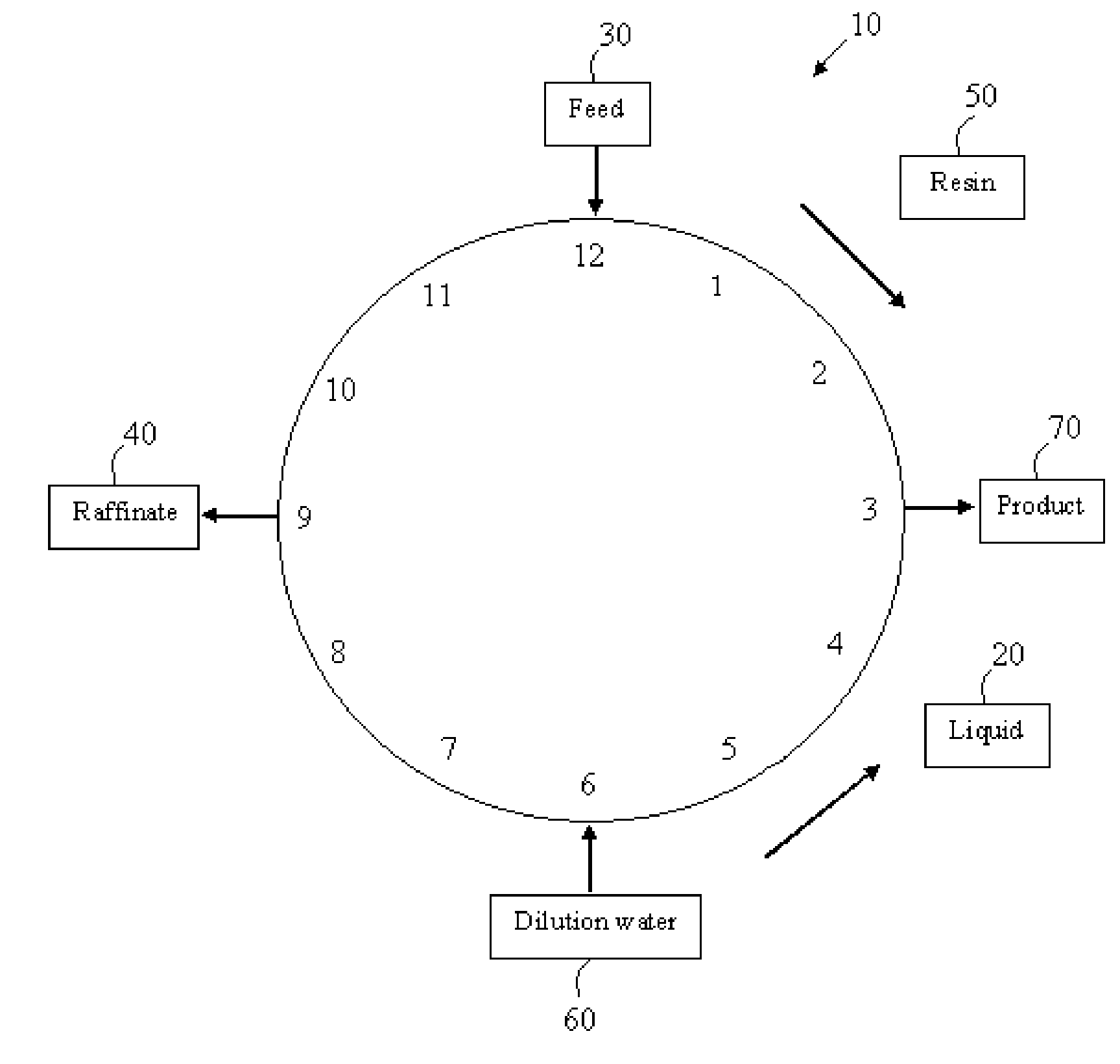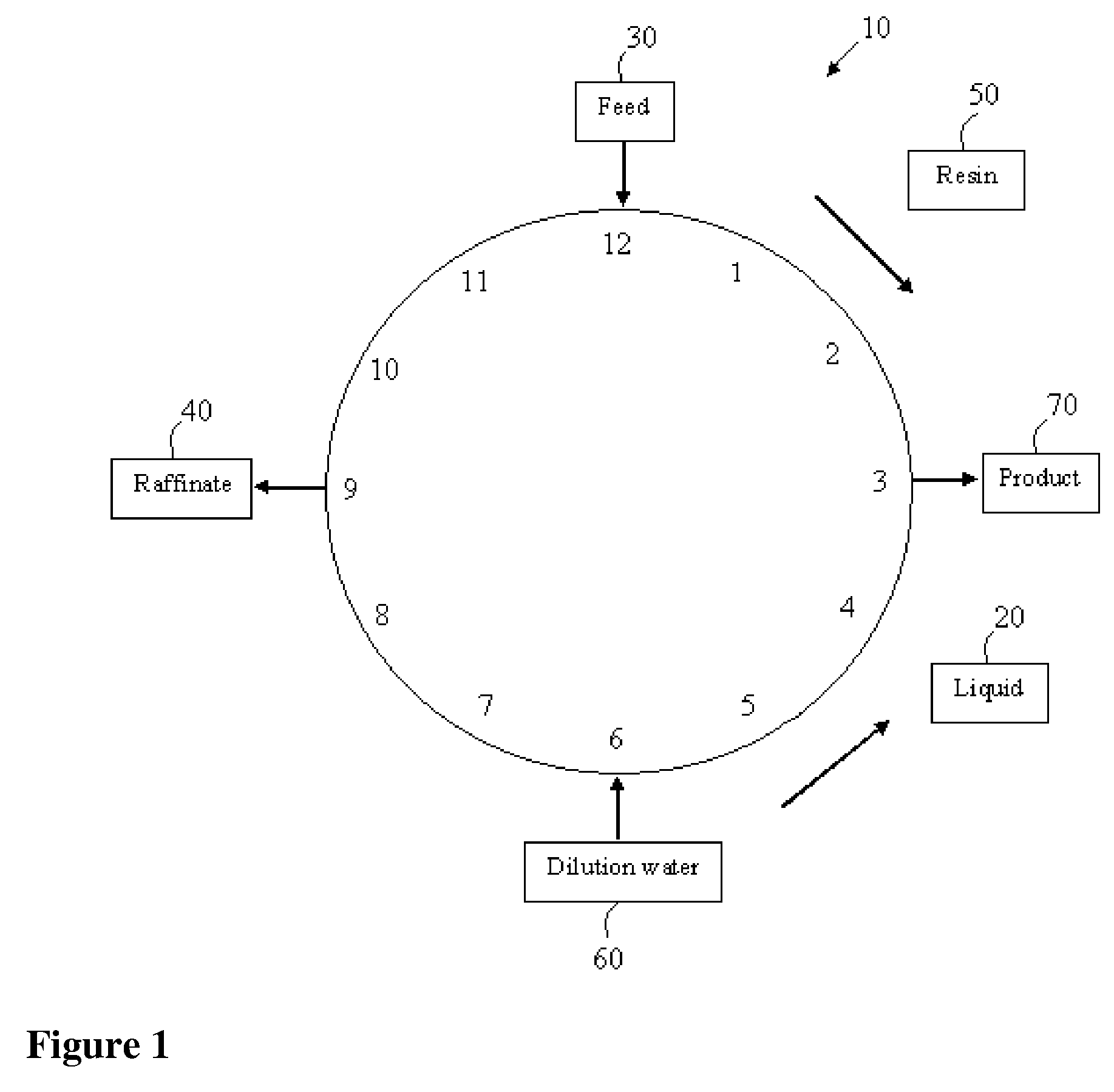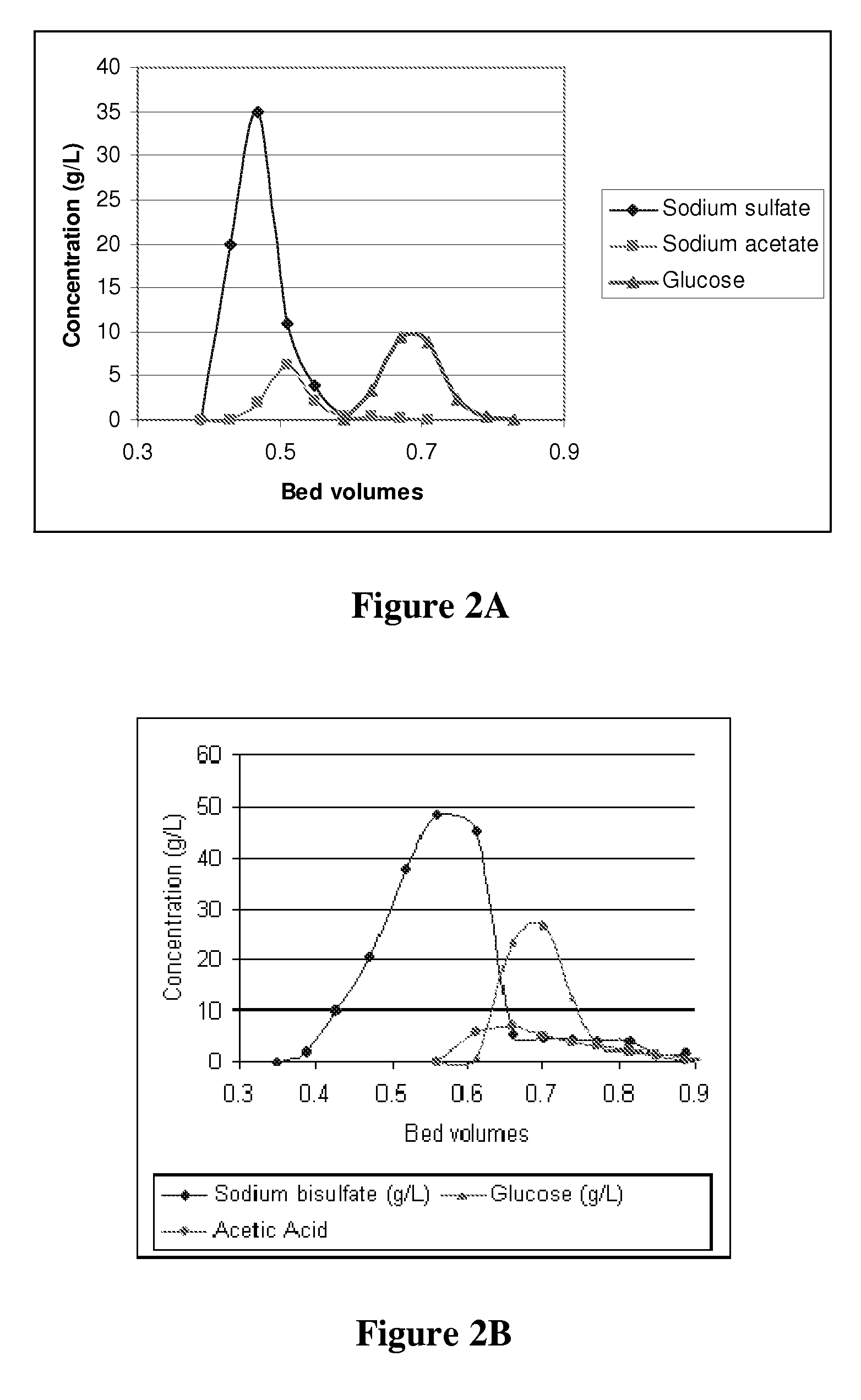Method of obtaining inorganic salt and acetate salt from cellulosic biomass
a cellulosic biomass and inorganic salt technology, applied in the direction of fertilization, etc., can solve the problems of achieve the effect of improving performance and reducing the complexity of the system
- Summary
- Abstract
- Description
- Claims
- Application Information
AI Technical Summary
Benefits of technology
Problems solved by technology
Method used
Image
Examples
example 1
Ion Exclusion Separation of Sodium Sulfate, Sodium Acetate, and Glucose
[0108]The effectiveness of ion exclusion at pH 8 as a process for the removal of sodium acetate and sodium sulfate salts from glucose is illustrated by this example.
[0109]A fixed bed ion exclusion column was filled with Mitsubishi Chemical resin #UBK530. Prior to filling the column, 135 ml of the resin was suspended in 1 liter of deionized water and allowed to settle. The supernatant was decanted and the procedure carried out three times, which was sufficient to remove all visible fine particles. After decanting of the third supernatant, two resin volumes of deionized water were added to the resin, and the slurry was poured onto the 127 ml column. The column contains a hot water jacket, but the jacket was not used during the resin-loading procedure. The top of the column was sealed with a rubber stopper attached to a water pump. Care was taken to ensure that the seal was airtight.
[0110]The packed column was washe...
example 2
Comparative Example—Separation of Glucose from Acetic Acid at pH 3
[0116]This example illustrates the use of ion exclusion for the separation of sugar from acetic acid and sodium bisulfate at pH 3. The separation of acetic acid from glucose at pH 3.0 is poor as these two components co-elute (see FIG. 2B). The use of the methods as described herein, provide superior separation of acetic acid and sugar.
[0117]A fixed bed ion exclusion column was filled with Mitsubishi Chemical resin #UBK530. Prior to filling the column, 135 ml of the resin was suspended in 1 liter of deionized water and allowed to settle. The supernatant was decanted and the procedure carried out three times, which was sufficient to remove all visible fine particles. After decanting of the third supernatant, two resin volumes of deionized water were added to the resin, and the slurry was poured onto the 122-ml column. The column contains a hot water jacket, but the jacket was not used during the resin-loading procedure....
example 3
[0124]A feed sample of biomass sugars was made by subjecting wheat straw to pretreatment with sulfuric acid at conditions described in U.S. Pat. No. 4,461,648. The pH of pretreatment was 1.4 and the resulting pretreated feedstock was adjusted to pH 5 with sodium hydroxide. The neutralized cellulosic biomass was subjected to enzymatic hydrolysis by cellulase enzymes made by the fungus Trichoderma to produce a crude sugar stream. The crude sugar stream was separated from the insoluble residue, which is primarily lignin, by using plate and frame filtration. The clarified sugar stream was evaporated to 44% total solids, with a concentration of 109 g / L sulfate salts of sodium and potassium, 300 g / L glucose, 44 g / L xylose, 5.3 g / L arabinose, 10.9 g / L sodium acetate (measured as acetic acid), and various trace metals. The clarified sugar stream was evaporated, adjusted to a pH of 8 and then fed to the column and eluted as described in Example 1. The results are sho...
PUM
 Login to View More
Login to View More Abstract
Description
Claims
Application Information
 Login to View More
Login to View More - R&D
- Intellectual Property
- Life Sciences
- Materials
- Tech Scout
- Unparalleled Data Quality
- Higher Quality Content
- 60% Fewer Hallucinations
Browse by: Latest US Patents, China's latest patents, Technical Efficacy Thesaurus, Application Domain, Technology Topic, Popular Technical Reports.
© 2025 PatSnap. All rights reserved.Legal|Privacy policy|Modern Slavery Act Transparency Statement|Sitemap|About US| Contact US: help@patsnap.com



